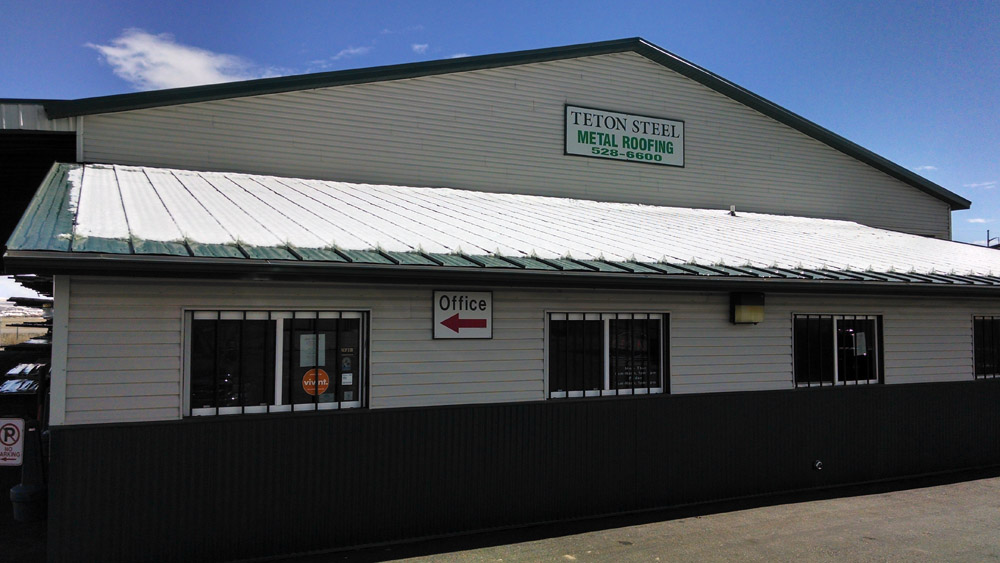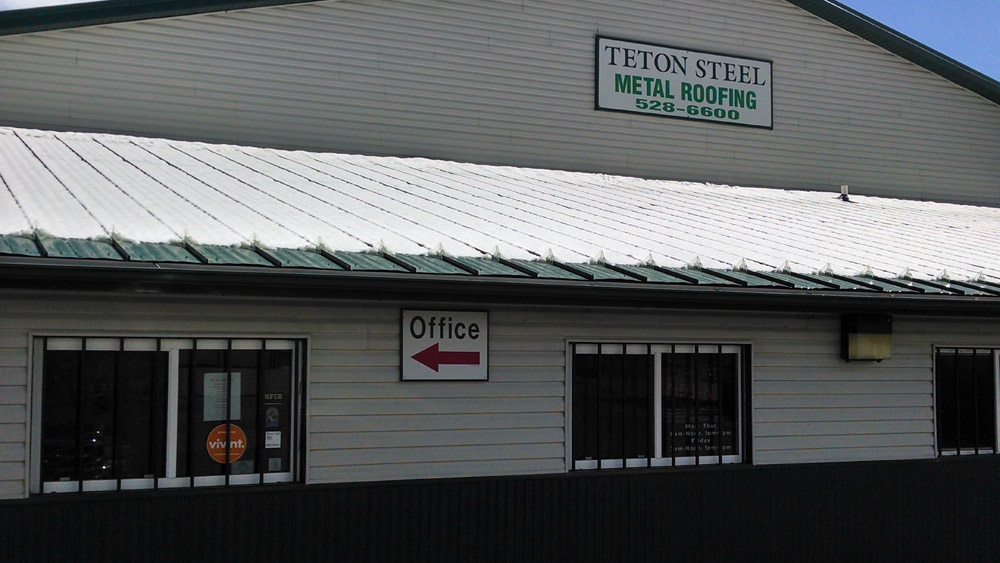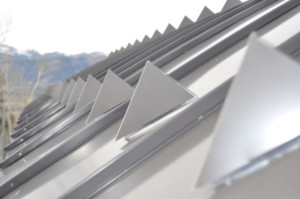Time To Start Your Project: How To Get The Easiest Snow Guard Installation
You have done your measurements, and you have ordered the right amount of guards for your particular project, which means it is time to get to work installing your guards. Proper installation is not hard, but you need to take your time and pay attention to your work to make sure that things run smoothly. These simple steps in the installation process will help you get the job done right the first time.
Take Time To Clean
First and foremost, you have to take some time to clean the area where you are going to put your snow guards. Using isopropyl alcohol will get rid of the dirt and grime that interfere with the adhesives ability to set properly, and will make a much better seal between the guard and the roof. You will want to use a soft, clean rag to do the cleaning and you will probably need to change rags every three or four guards so you do not just move dirt from one spot to another.
Apply Adhesive Liberally
Adhesives are cheap, but guards are not, and neither is the damage that is caused when snow and ice fall into your yard or on your family. Be sure that every square inch of the bottom of the guards are covered with the adhesive that you are using, even if that means using a gloved hand to spread the glue. If there is a lot of extra glue on the bottom of the guard, do not worry; that glue will come in handy later on.
Press, Do Not Set
Once the glue is on the guard, make sure that you press the guard in place, and do not just set it down on the roof. Pressing the guard down helps the glue to make a better seal, by destroying air pockets under the guard, and it will also force some of the excess glue out around the sides of the guard. You will be using this extra glue to make a seal around the base of the guard that is water tight.
Take Your Time
Finally, the easiest way to do this job is to take your time. The installation should take a few hours, and trying to save fifteen minutes by hurrying through the process is not worth the risk. Completing the job will bring a great sense of pride in a job well done, and you should be able to save a lot of money in the process. If you are concerned that you are not doing the job correctly, look for any number of installation guides online for your brand and style of guard.
Common Snow Guard Installation Mistakes: Tips For Avoiding Costly Errors
To avoid the high cost of having someone else install a snow guard system, many homeowners opt to do the project themselves. The process is pretty easy and straightforward, and if the homeowner has some background in minor repairs, the project should go off without a hitch; however, there are still some common mistakes that are made. Avoiding the common mistakes can save homeowners time and money having to replace the work that they have already done and ensure that they have the protection that they need for their home.
Improper Spacing
Every package of snow guards will come with the manufacturer’s instructions for how the guards should be installed, including how far apart they need to be. These numbers are not just recommendations, they are tried and tested measurements that determine the optimal spacing to provide the best coverage, at the lowest price. Spacing the guards too far apart leaves parts of the roof vulnerable and homeowners wind up with large sheets of ice and snow sliding down their roofs when they thought the roof was protected.
Improper Measurement
Alongside the spacing issue, many homeowners underestimate how many guards they need for their home. Usually this is due to a mistake in the measurements taken before they place their order, and so they do not have enough guards to complete the job. It is very important that the homeowner order another box to finish the job, rather than trusting they can stretch the guards that they have to give the coverage they need.
Improper Setting
Since most high end snow guards are now made from polycarbonate materials, the recommended installation technique is a strong adhesive. This protects the roof from damage that might be caused by screwing the guards into the metal, and the quality adhesives are just as strong. Where homeowners fall short is not allowing the adhesive to set properly, and so the glue does not make the kind of bond that it needs to keep the guard in place. The adhesive might hold for a light snowfall, but the catastrophic failure will eventually occur, and the guards will come loose.
Homeowners must be sure to follow all of the instructions, including cleaning the area to be glued and set timers, so that their guards attach firmly. Common mistakes made during installation can be easily avoided. By following the instructions closely, homeowners can get the coverage they need during heavy snow, and save money by doing the work themselves.
Calculating The Number Of Guards You Need: Numbers You Should Have Handy
Once you have made the decision to make your home a safer place by installing snow guards to keep large sheets of snow and ice from falling to the ground, you have to make a decision about how you want the guards installed. Paying someone else to do the work frees you up to do other things, but it can be very costly, and most of the guards can be installed with tools that you may already have around your home. If you do decide to do the work yourself, you will need to do some calculations to determine how many guards you need.
General Roof Information
First you need to know some general information about your roof. These are numbers that you might be able to find in your mortgage paperwork or any other papers you have laying around from other work that you have had done on the roof. You need to know the length of the roof, in feet, as well as the width of the roof from eave to apex. In addition, you need to know the pitch of the roof, as that has a significant impact on the weight that the guards are expected to hold and the total number of guards that you will need.
Rib Spacing
Metal roofs do require an extra measurement, that of the spacing between the ribs all along the width of the roof. The wider the spacing is, the more guards you will need, as there will be fewer natural breaks along the roof to slow the slide of the ice and snow from the roof to the ground. Make sure that you get accurate measurements, especially if you have to order the guards, because if you do not have enough guards, your roof’s protection will be suspect.
Snow Load
Finally, you will need to do some research into the snow load for the area where you live. This number will be expressed in PSF (pounds per square foot), and there are several different places that you can find this information. The best thing to do is check with your city’s planning and zoning office to find out what the local requirements are, but there are online resources that can help you find your snow load as well. The greater the load, the more snow guards you will need, so, again, accuracy is key.
The installation of snow guards will help to protect your family and your property from harm when snow starts to fall, but you need to do some work to make sure that you have enough guards. Simple calculations and the right numbers are all that you need to get started.
Keeping The Home Safe During Snowfall: Three Ways To Manage The Roof
Snowfall can cause all kinds of damage to the roof and it remains dangerous as long as it stays on top of the house. The longer the snow stays on the roof, the greater the chance that it will turn in to ice and fall in a deadly sheet, but even loosely packed snow can cause personal injury and property damage if it falls off the roof without being slowed first. Typically there are three ways that homeowners can deal with the snow and keep their homes safe.
Shoveling
One very common way to take care of the snow is for homeowners to climb on the roof and shovel the snow off themselves. This tactic works in areas where the snowfall is irregular and for homes that have very slight inclines. The problem is that homeowners need a safe way to get on the roof to do the shoveling, and that is not very easy when there is ice and snow on the ground. Shoveling should be seen as a last resort, or something to be used in an area where homes are likely to only see snow once or twice a year.
Pipe Guards
A common type of retaining method for homes is the pipe guard or snow rail. This type is basically a pipe wall that goes around the outside of the roof. The piping is installed near the edge of the roof and breaks up big pieces of ice and snow as they begin to fall from the roof to the ground. These are commonly found in areas with very high levels of snowfall that build up high enough to be stopped by the pipe walls. There is an issue where snow and ice can be in a thin enough layer that it slips under or between the pipes in the wall, and that makes the wall a lot less useful than some of the other methods. Homeowners with this type of snow guard may wish to make a change by installing snow breaks on the reach from the pipe to the roof, or installing snow guards with adhesive to help stop the smaller snow falls.
Snow Shields
Finally, there are snow guards that provide a much more stable and consistent level of protection for the home. These snow shields are a series of small shapes, usually either an “L” or a triangle, that breaks snow and ice into several very small pieces as the sheet moves down the roof. The triangular guards can retain hundreds of pounds of snow, making the sliding snow and ice more manageable before it hits the ground, and providing the best level of protection for homeowners. Most snow shields are simple enough to install that homeowners can do the work on their own.
Protecting the home and property from damage caused by snowfall is the responsibility of every homeowner, and these methods for dealing with the snow can ensure a higher level of safety than an unprotected roof.
Debunking Some Snow Guard Misconceptions: Things That Homeowners Need To Know
Snow guards are a vital part of keeping a home safe in areas where regular snowfall is a part of every winter, but there are some misconceptions that people have about those guards. Bad information leads to bad decision making, and you cannot afford to put your family or your property at risk by making bad decisions concerning your snow guards. These are some of the most common misconceptions people have about snow guards.
“My Home Does Not Need A Guard”
The single biggest issue that comes up when discussing snow guards is the number of people who think they do not need a guard. Sometimes this is because they do not understand the dangers that come with snow and ice sliding off of the roof, or it is because they do not think that there is enough snow in their area to warrant installing a guard. This past winter has shown that any part of the continental United States can get heavy snow at any time, so location is not a reason to avoid installing a guard. It almost does not matter where you live; if there is a chance that you will get heavy snow, you need some kind of guard.
“My Old ‘L” Shaped Guards Are Enough”
There are a lot of homes that already have snow guards in place, but if those guards are more than a few years old, they are probably using the old “L” shaped guard model. This design provides very little protection and they have recently been replaced by the triangular shaped guards from companies like Snoshield. The new guards are better about weight distribution and are rated for heavier snowfalls than the “L” shaped designs, so even if you have a guard system, you may need an upgrade.
“Snow Guards Are Ugly And Will Ruin My Home’s Value”
Finally, there are some homeowners who will not install guards because they think that the guards will detract from the appearance of the home and decrease its value. New coloring technologies have made it possible to match the guard to the color of the roof, so you cannot see the guard from street level, and what you will find is that snow guards actually increase the value of the home because of the safety that they provide against injury and property damage.
In most areas of the country snow guards are vital to keeping your family and property safe from damage caused by snow. By breaking down some of the misconceptions hopefully you will understand the benefits and the reasons behind snow guard installation.
Making The Case For A Modern Design: The Benefits Of Triangular Guards
Snow guards have been around for decades, but until recently there has not been a lot of change in the market. The traditional “L” shaped design was the standard for most of that time, and few people thought to challenge the status quo; however, recent innovations in snow guard technology show that the triangular design is far superior. Homeowners who already have a snow guard system in place may find it hard to make the switch over to the triangular guards, but there are some compelling reasons to do so.
Snow Retention
The first thing that you will notice about the triangular guards is that they are able to retain more snow than a “L” shaped guard. At their widest point an “L” guard may only be a couple of inches, but a triangular guard can be almost as wide as you want it. The standard sizes will see triangular guards come in at nearly three times as wide at their base as the most common “L” guards. This means that the guard holds back more snow, and keeps greater control over the snow and ice that slides down the roof than the “L” guards.
Failure Rates
Another issue that “L” guards tend to have is a higher than average rates of failure. With an “L” guard all of the pressure of the ice and snow comes along a single access, and this can cause movement to the point where the guard breaks free from the roof. On the other hand, a triangular guard distributes the weight of the snow and the pressure that it causes along multiple axes, meaning that they can hold many more times the weight of ice and snow before they start to fail.
Ease Of Installation
Finally, many of the older model “L” guards required screws or bolts to keep them in place on the roof. Most homeowners needed someone else to come and install them, and that raise the price of the unit considerably. The new triangular designs are meant to be installed with nothing more than an adhesive, and that means homeowners can do the work on their own. This makes the triangular guards not only easier to install, but cheaper as well.
Triangular snow guards from companies like Snoshield give your home the best coverage and the highest level of protection on the market. If you find that you need to have a snow guard system put in place, be sure to go with a triangular guard.
The Job Is All About The Prep: Getting Ready For A Snow Guard Installation
Happy Valentines Day! Just as all relationships require the right preparation, so do snow guard installations.
Snow guards are necessary to keep your home and your family safe from potentially deadly damaging falling snow, and the guards are something that you can install on your own. Most snow guard systems are very cheap, especially because it is a do it yourself project, so there is no reason not to do the work. A snow guard system does not take long to install, but there are some items that you need to make sure that you have handy, so you can get the job done right the first time.
Alcohol Wipes
The biggest problem homeowners have with snow guard installation is that they are unable to get a good seal between the guard and the roof. Companies like Sno Shield recommend the use of an alcohol wipe to clean the area where you are going to put the guard and the bottom of the guard as well. By keeping both areas clean you will ensure that dirt and grime do not interfere with your sealant and the guard will stick on the roof the way that it was designed.
Bonding Agent
Next, you are going to need a high quality bonding agent to keep the guards in place for years to come. The last thing that you want to see is the guards come loose because your bonding agent did not stand up to the elements. One of the best choices for the job is Surebond. It is designed for cold temperatures, as well as exposure to water and other weather related situations. The bond will stand up for years and years, and you do not have to worry about failure.
Caulking Gun
Finally, you fill need some way to get the bonding agent on to the roof and the bottom of the snow guard. A caulking gun is not something that every homeowner has at their disposal, and you will need to get one when you go to the hardware store to get your bonding agent. Even a very basic gun will be more than enough to do the job, and you do not need to spend a lot of money on this particular item.
With the right tools in hand you can tackle your snow guard installation without the need to hire someone to do the work for you. Just make sure that you do the work when the roof is dry and when you have time to do the work from start to finish in one sitting. This will help with consistency and make sure that the job gets done.
Upgrades That Can Save A Life: Three Things Your Home Needs
Accidents around the home are one of the leading causes of death in the United States for people under the age of forty. Many of the victims are children, and the deaths are caused by things that were completely preventable, if the homeowner took the initiative to make some very simple upgrades to the home. These are three of the most important changes that you can make to your home to make it safer and reduce the risk of serious injury or death.
Snow Guards
When snow falls on the roof it begins to pack and the longer it stays on the roof, the more dangerous the snow becomes. Once the temperature starts to rise, the snow will get loose and begin sliding off of the roof towards the ground. If you have a metal roof, the danger is magnified even more, since the lack of friction increases the speed at which the snow slides. A snow guard from a company like Sno Shield will help to break up the largest pieces of snow and keep them from all falling at the same time, which will reduce the risk of serious head injury or death to people walking near the eaves of the home.
New Smoke Alarms
The only time you really think about your fire alarm is probably when it starts to beep while you are in the middle of cooking dinner, or when the battery starts to get low. Most homes have smoke alarms that are extremely old and the technology is out dated. New designs incorporate the best features of traditional alarms and add new things like air sampling and carbon monoxide/dioxide detection. A new model smoke alarm is much more sensitive than one more than five years old, and they can provide a crucial early warning in the event of a home fire.
Gas Line Inspections
Finally, your home’s gas line connections can start to get weak and will eventually need to be tightened or repaired. The failure to do so can cause leaks in the gas lines that will contribute to the buildup of deadly gas in your home. The gas is a danger because of the risk of asphyxiation or because of the potential explosive hazard, and annual inspections will ensure that there are no small problems that will grow into larger issues.
These small upgrades to your home can help to save a life and make you feel safer. None of these things cost a lot of money, so there is no reason not to get started on them right away.





